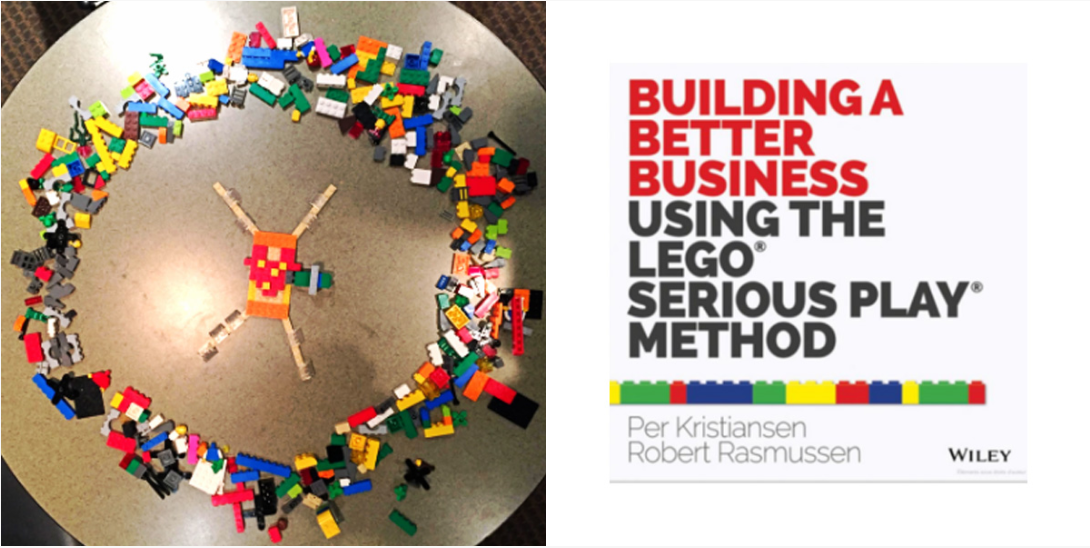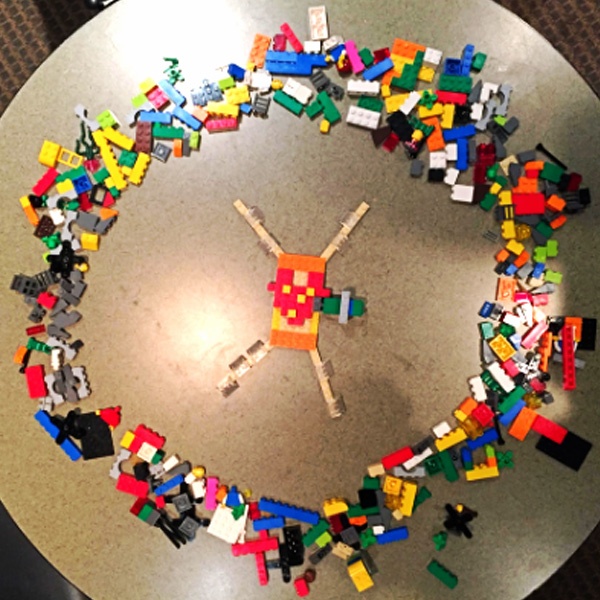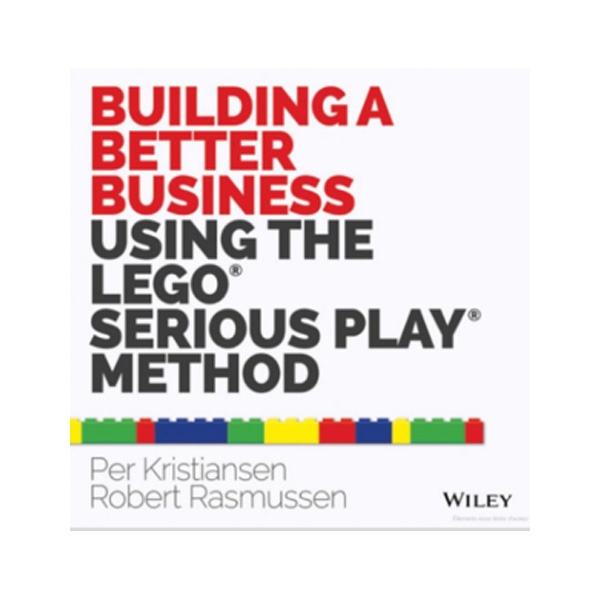I recently found myself at The Berkley Center for Creative Entrepreneurship surrounded by piles of LEGO® bricks. And it was not just for play- it was for “SERIOUS” play.
I was participating in a Meetup focused on the LEGO® Serious Play® (LSP) methodology, a process designed to enhance innovation and business performance using a historically favorite childhood toy, LEGO® bricks. Far more than fun and games, LSP is an effective practice, “based on research which shows that hands-on, minds-on learning produces a deeper, more meaningful understanding of the world and its possibilities.”
Our facilitator Dieter Reuther, a certified LEGO® Seriously Play® Facilitator (yes… certified), guided us through a series of four 4-minute activities of increasing difficulty. We worked primarily in groups of 3, and I found these activities together reinforced four main principles of Design Thinking.



“You can learn more about a person in an hour of play than you can from a lifetime of conversation.” — Plato
1. Withhold Judgment
In the first warm-up activity, I was instructed to build a LEGO® creation that revealed something personal about myself to the group. Immediately following the directions, the room erupted into harmonious sounds of plastic pieces shuffling around, being snapped together, and popping off. But as the remaining time dwindled, I felt pressured to produce something worthwhile, especially in this room of complete strangers. I felt the need to prove myself creatively while also making sure I wouldn’t be perceived as overly wacky.
Glancing around to see models others were building, I noted the smiles and looks of intense concentration from others. This was all it took to realize the futility of my concern.
In this moment I recognized the first attribute of LSP: that it forces you to not take yourself too seriously and never let self-consciousness prevent you from getting your hands dirty! Similarly, in Design Thinking it is crucial to suspend judgment and have a no-holds-barred mindset to allow the greatest opportunity for creative thinking.
2. Be Agile
As the workshop was hosted by one of the finest music schools in the country, Dieter felt Music was an appropriate theme for the activities that followed. So in the second task, we were asked to visualize, using LEGO®, our favorite song. I chose my wedding song, Sinatra’s “Fly Me to the Moon”.
This is no simple feat. You’re immediately forced to think symbolically, and any attempt to get too literal looks silly- even if you have expert LEGO® skills. (I’m a spaceship specialist myself.) Despite my associations with the song, the activity caused me to think about “Fly Me to the Moon” in ways I hadn’t before.
LSP forces you to think openly, using symbols and tangents to move your work to unimagined spaces. This process opens up your mind, allowing you to move responsively and be flexible in your approach. In Design Thinking, being able to shift gears and maintain an agile mindset allows us to navigate complexity with more ease.
3. Tell a Story
The next activity involved fantasizing around the future of music listening, and using the bricks to visualize our thoughts. With unlimited possibilities, envisioning a future state can be an elaborate exercise. I quickly discovered that future-thinking is a daunting task in itself, and doing it in under four minutes, WITH LEGO®, is the ultimate challenge.
After a few minutes of struggling to build, I realized the story I would tell about my creation was going to have to pull more weight than the model itself. The model helped represent my vision, but the story behind my model actually carried the vision out.
It’s not about your ability to create beautiful structures with the bricks; the bricks act as a stimulant to spark ideas in your mind and help lay the foundation of a story. Storytelling is an essential skill for translating insights in the Design Thinking process.
4. Collaborate Constructively
The fourth and final activity was a team-based, 10-minute exercise. We were tasked with combining the team’s three models from the previous activity into one super-system that, again, envisioned the future of listening to music.
Sounds easy, right? Wrong! Getting three strangers to combine three nuanced ideas together is a beastly problem. Team-based problem solving is not always a straightforward process as different personalities, working styles, and perspectives always come into play.
But with the LEGO® bricks as the focus and mediator, the activity went well. We identified a unique problem and identified a creative approach to solving it in a short amount of time. With lightweight negotiation and some iteration, we built a solution and came out smiling.
In encouraging you to point to the model, not individuals, during a group disagreement, LSP depersonalizes criticism and helps the group progress ideas more efficiently. Collaborative work is a critical part of the Design Thinking process, and one that does not always come easy. When we can provide critique and constructive feedback effectively, we set ourselves up for the greatest chance of design success.
If you’d like more information on LEGO® Serious Play®, check out their website or grab a copy of the book on Amazon.
Paul Nadaff is a Senior Researcher at Essential. Strategist and human factors specialist merging experience in marketing and user research to create value for clients. Paul’s cross-functional experience has helped him excel at crafting intuitive and useful products. Passionately curious, Paul strives to find the root needs and desires of those who will ultimately use the product.


